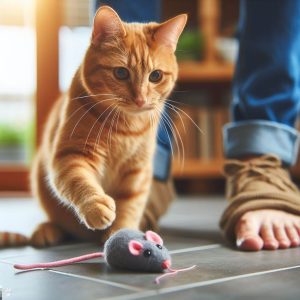Cats are often seen as fastidiously clean animals that constantly groom themselves. But is this perception accurate? As a cat owner, you need to know the truth about your feline friend’s hygiene habits. Proper grooming and hygiene are essential for your cat’s health and wellbeing.
An Overview of Feline Cleaning Behaviors
Cats spend up to 50% of their waking hours grooming themselves. Their rough tongue works like a brush to remove dirt, distribute natural oils, stimulate circulation, and remove loose hair. This frequent self-grooming keeps their coat looking clean and neat.
Cats also hate getting dirty and will immediately start cleaning themselves if their fur gets soiled. They lick their coats clean multiple times a day and also groom after eating, drinking, using the litter box, playing, or social interactions.
So why do people question if cats are clean animals?
While cats are masters of self-grooming, they can’t reach every spot by themselves. There are some hygiene tasks that require human assistance. Cats also carry certain bacteria, parasites, and viruses that can cause disease if not controlled through veterinary care and a clean home environment.
This article will explore the facts about feline cleanliness and provide tips to keep your cat healthy and hygienic.
Do Cats Really Need Baths?
Many cat owners believe that cats clean themselves so well that they never need baths. But is this true?
Veterinarians agree that most cats do need occasional bathing to fully remove dirt and control odor. However, they recommend not bathing cats too frequently, as this can dry out their skin and coat.
Here are some signs that it’s time to give your cat a bath:
- Noticeable dirt on their fur that’s not coming off with self-grooming
- An odor emanating from their coat
- Evidence of skin irritation or parasites
- Long hair matted with snarls
Kittens generally need more frequent bathing, as they are still learning to properly clean themselves. Elderly or obese cats may also need extra assistance.
Unless your cat is exceptionally dirty, vets recommend bathing every 2-3 months. Use a gentle cat shampoo and brush or comb thoroughly before and after. Make it a positive experience with treats and praise.
The Importance of Regular Brushing
In addition to the occasional bath, daily or regular brushing is imperative for your cat’s coat health and hygiene.
Here are some key benefits of brushing your cat:
- Removes Loose Hair: Brushing helps remove dead hair before your cat swallows too much of it during grooming. This prevents hairballs.
- Distributes Natural Oils: Brushing helps distribute sebum and moisturize their skin and fur.
- Reduces Mats: Detangles and straightens fur to prevent painful mats from forming, especially in long-haired cats.
- Removes Dirt: Dislodges dried dirt, dander, and debris.
- Stimulates Circulation: Brushing massages the skin and promotes blood flow.
- Social Bonding: Brushing is relaxing for cats and strengthens your human-feline bond.
Invest in a good cat brush suited for your cat’s coat length. Brush problem areas like the tummy, back, and behind the legs. Start slow if your cat is skittish and reward with treats.
Litter Box Hygiene Matters
Many cat owners are diligent about scooping the litter box but may neglect fully cleaning the box as often as needed. Proper litter box hygiene is crucial for your cat’s health and your home’s cleanliness.
Follow these litter box cleaning tips:
- Scoop solid waste from the litter box daily. Leaving stool in the box can deter your cat from using it.
- Dump the litter entirely every 1-2 weeks. Scrub the box with soap and hot water to remove odors and residue.
- Disinfect the litter box monthly with a pet-safe cleaner to kill germs and bacteria. Avoid harsh chemicals.
- Replace old, cracked litter boxes. Plastic absorbs odors over time.
- Use unscented clumping litter. Cats don’t like perfumed smells.
- Keep litter box areas clean and dry. Place away from food and water bowls.
- Provide 1 more litter box than the number of cats. This prevents territory issues.
- Avoid sudden litter brand changes. Transition slowly if needed.
Maintaining clean litter boxes is essential for health, training cats to keep using them, and reducing home odors. It’s a chore worth doing.
The Role of Grooming in Parasite Control
While grooming helps remove some surface dirt, it does not protect cats from parasites like fleas, ticks, and intestinal worms. These parasites can cause skin irritation, anemia, diarrhea, and transmit diseases.
To control external and internal parasites:
- Use monthly topical flea/tick prevention like Frontline. Oral pills like Nexgard are also very effective.
- Vacuum and wash your cat’s bedding frequently to remove eggs and larvae.
- Bathe cats after applying flea medication to kill and remove fleas on their coat.
- Administer broad-spectrum dewormers year-round or as per your vet’s advice based on risk factors.
- Keep your grass cut short and yard free of rodents that can carry parasites.
- Groom cats daily with a flea comb and look for black specks of flea dirt.
- Check for ticks after time outdoors, especially around the neck, head, and ears.
- Monitor cats for signs of scratching, scooting, or tapeworms in stool.
While grooming helps cats look clean, parasites can lurk unseen. Work closely with your vet on preventative care.
Facial and Dental Hygiene Needs
Cats spend much of their grooming time cleaning their face and head areas. So you may assume their facial hygiene is covered. But some areas are difficult for them to reach fully.
Here are some tips for cleaning your cat’s face:
- Wipe the eyes: Use a warm, damp cloth to gently wipe eye boogers, crustiness, and staining daily. Avoid rubbing.
- Clean excess tear stains: Wipe stains under the eyes. You can apply milk of magnesia to light stains weekly. Rinse after 5 minutes.
- Remove food debris: Wipe your cat’s face after meals to remove food stuck on their lips and whiskers.
- Freshen smelly mouths: Use pet mouthwash on a cloth or cotton ball once a week to reduce bad breath.
- Brush teeth: Daily brushing with a pet toothbrush and toothpaste helps prevent periodontal disease. Get them used to it slowly.
- Check ears: Look inside ears weekly for dirt, wax buildup, redness, or odor. Clean dirty ears only as directed by your vet to avoid damage.
Regular face washing, tooth brushing, and ear checks will benefit your cat’s facial hygiene and health.
Bathing Cats Properly
While frequent bathing is not advised, occasional bathing plays an important role in cat hygiene. Follow these tips for washing cats safely and successfully:
Choose the Right Location
- Bathe in a contained space like the bathroom to prevent escape.
- Place a rubber mat or towel in the tub for traction. Cats don’t like slippery surfaces.
- Close the toilet lid and remove all bath products. Provide clear escape routes.
- Have a helper to keep your cat calm and help rinse.
Use Cat-Friendly Products
- Choose a gentle shampoo labeled for cats. Avoid products with harsh chemicals.
- Dilute shampoo in a spray bottle to avoid getting it in their eyes.
- Purchase ear cleaner and a soft toothbrush and toothpaste for cats.
- Have towels ready beforehand to dry your cat promptly.
Make It Positive
- Trim nails to avoid scratches if your cat is feisty.
- Speak in a calm, reassuring voice throughout the process.
- Give treats and verbal praise during and after the bath.
- Allow your cat to air dry partially before toweling to avoid stressing them out.
Bathe Effectively
- Thoroughly brush out mats beforehand. Comb through the wet coat during the bath to fully saturate.
- Wet your cat’s body while supporting their hips and chest area. Use a detachable shower head on low pressure.
- Apply diluted shampoo to dirty areas. Use a washcloth for their face.
- Rinse thoroughly to avoid residue. Check for soapy patches.
- Towel dry gently – don’t rub. Allow your cat to finish grooming themselves.
Follow these tips for an easier, stress-free bath time resulting in a sparkling clean cat!
Providing Proper Nutrition and Hydration
Your cat’s diet hugely impacts their skin and coat health. Provide balanced commercial or homemade foods to support good hygiene from the inside out.
Feeding tips for optimal nutrition:
- High protein: Choose grain-free wet and dry food with at least 30% quality protein sources.
- Limited carbs: Reduce carbohydrates, as cats don’t efficiently digest them. They can cause obesity.
- Moisture-rich: Feed wet food since cats don’t drink much water separately. Canned food has high moisture content.
- Omega fatty acids: Ensure food contains omega-3 and omega-6 for skin and coat health.
- Natural preservatives: Avoid artificial preservatives like BHA, BHT, and ethoxyquin that burden your cat’s system.
- Age-appropriate: Feed kitten and senior cat formulas tailored to their nutritional needs.
Tips to entice drinking:
- Provide fresh water daily. Cats prefer wide, shallow bowls.
- Place water bowls away from food and litter boxes.
- Use a water fountain with constantly flowing water to pique their interest.
- Add a bit of low-sodium broth or tuna juice to water.
- Try different materials like ceramic, glass, or metal to rule out preferences.
- Give wet food topper treats high in gelatin to increase moisture intake.
Monitoring your cat’s eating and drinking habits is important to ensure adequate hydration and nutrition for good hygiene and wellbeing.
Establishing Proper Litter Box Habits
Improper litter box habits can negatively impact your cat’s cleanliness and health. Follow these tips to establish good litter box routines:
Litter box number and placement
Cats are territorial about bathrooms. Have at least 1 more box than cats and spread them out across your home. Place boxes in quiet, low traffic areas and away from food.
Litter box size
Make sure boxes are 1.5 the length of your cat to allow scratching and movement. Large kitties need extra-large boxes.
Litter material
Try different unscented clumping litters to determine your cat’s preference. Avoid scented or dusty litter.
Litter box maintenance
Scoop waste daily and change litter completely every 1-2 weeks. Scrub boxes monthly with soap and hot water.
Spot cleaning accidents
Thoroughly clean soiled areas with an enzyme cleaner to remove odors. This prevents repeat accidents.
Litter training kittens
Start kittens in a shallow litter pan. Gently place them in after naps and meals until they learn.
Re-training adult cats
If a trained cat stops using the box, see a vet to rule out medical issues, then go back to litter box basics.
By providing ideal litter box conditions, you can avoid lapses in hygiene and issues like urinary tract infections in your cats.
Creating a Clean Home Environment
While cats focus on self-grooming, they depend on you to provide a clean living space. Here are some tips for a feline-friendly home:
Clean floors: Vacuum and mop tile floors weekly. Disinfect any areas soiled by litter tracking or accidents.
Wash bedding: Machine wash your cat’s beds, blanket, and any washable toys weekly to kill fleas and refresh.
Grooming tools: Disinfect grooming tools like nail clippers and combs after each use. Store in a clean area.
Fresh food dishes: Wash food and water bowls thoroughly with soap and hot water daily.
Clean litter boxes: Scoop waste daily and change out litter completely every 1-2 weeks. Scrub boxes monthly.
Dust control: Dust, vacuum, and wash items like window treatments regularly that attract allergens and dander. Use HEPA filters.
Natural cleaning: Use natural cleaning products when possible. Avoid strong chemical fumes that may irritate your cat’s respiratory system.
Pest prevention: Keep your home free of ants, cockroaches, and rodents that spread parasites. Avoid poisonous products.
Air purification: Use air purifiers and ventilate with open windows to reduce dust, dander, and odors.
Keeping your whole house clean assists your cat in staying healthy and hygienic as well.
Grooming Tips for Long-Haired Cats
Cats with long, flowing coats like Persians require extra grooming diligence. Here are some tips for keeping your long-haired cat well-groomed:
- Brush thoroughly: Spend 10-15 minutes brushing daily to remove mats, tangles, and excess fur. Use a stainless steel comb for stubborn mats.
- Bathe regularly: Bathe at least once a month to keep their heavy coat clean and manageable. Use conditioning treatments to prevent dryness.
- Trim problem areas: Carefully trim longer fur on the backside and back legs if they get soiled from litter tracking.
- Handle mats gently: Never rip out mats, as this can hurt your cat. Use your fingers or a seam ripper to loosen and gently remove.
- Avoid shaving: Resist shaving long-haired cats in summer. This can damage their coat. Use cooling pads and increase brushing instead.
- Professional grooming: Take your long-haired cat to a groomer every 6-8 weeks for deep cleaning, nail trims, mat removal, and sanitary trims.
- Diet and supplements: Feed high-quality protein to support hair growth. Consider supplements like fish oil.
With diligent daily grooming and professional maintenance, your long-haired cat can stay clean and comfortable.
Ensuring Proper Hygiene for Senior Cats
As cats age, they may need extra assistance staying clean and comfortable. Here are some senior cat grooming tips:
- Brush gently: Use a soft bristle brush and brush lightly. Elderly cats have tender skin.
- Check for mats: Feel for mats which are painful on delicate skin. Have them professionally removed if needed.
- Clean litter box accidents: Senior cats with arthritis or dementia may miss the box. Clean up accidents immediately.
- Trim nails: Overgrown nails are painful and make walking difficult. Check them weekly.
- Wiperear: Gently wipe soiled fur on rear with warm, wet cloth if your cat can’t properly groom themselves.
- Clean face folds: Gently clean any facial folds where food and drool can collect.
- Bathewhen dirty: Give occasional gentle baths if their hygiene declines. Use small amounts of mild shampoo.
- Brush Teeth: Daily tooth brushing prevents painful dental disease. Switch to soft food if needed.
With some adjustments, you can ensure your senior cat stays clean and comfortable as they age.
In Conclusion:
While cats spend significant time self-grooming, they do require assistance from owners to stay clean and healthy. By brushing and bathing them properly, providing parasite control, maintaining litter boxes, feeding a high quality diet, and keeping their environment clean, you can optimize your cat’s hygiene and wellbeing. Don’t assume “cats are clean” and neglect these important hygiene habits. Every cat is unique, so tailor your approach based on your cat’s specific needs and preferences. With diligent grooming and preventative care, your feline companion can lead a healthy, hygienic life in a clean home.



